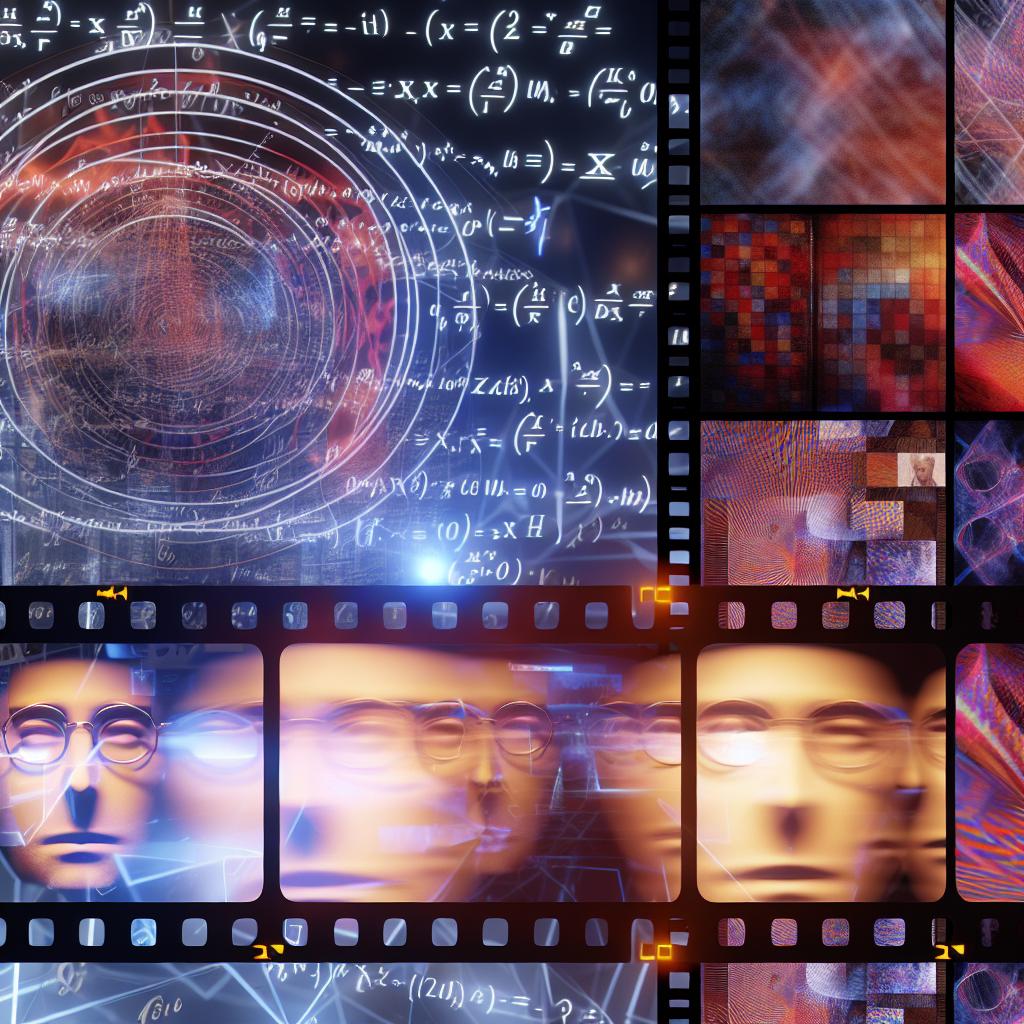The Cinematic Techniques in A Beautiful Mind
The film A Beautiful Mind, directed by Ron Howard, offers a compelling exploration of mental illness through an array of advanced cinematic techniques. The movie achieves a delicate balance between storytelling and visual presentation, resulting in an immersive experience for the audience. In this piece, we will delve into the various methods employed by the filmmakers to convey the complexities of the protagonist’s psychological landscape. The narrative follows John Nash, whose life and mind are skillfully portrayed through the lens of innovative cinematic approaches.
Camerawork and Editing
A fundamental part of the film’s immersive quality lies in the camerawork and editing. Cinematographer Roger Deakins uses specific camera movements to provide insights into Nash’s mental state. One notable technique involves the transitions between reality and hallucination. These transitions are executed in a way that maintains ambiguity, not explicitly signaling to the audience which aspects of Nash’s experience are real and which are imagined. This element of uncertainty compels viewers to engage deeply with Nash’s perspective.
The use of quick cuts often serves as an indication of the onset of a hallucination. Disjointed angles accompany these cuts, further indicating a departure from reality. This approach keeps the audience in a similar state of confusion as Nash experiences, thus mirroring his challenges in differentiating between what’s true and what’s imagined. As the film progresses, this editing style becomes more refined, allowing the audience an opportunity to acclimate to Nash’s mental transitions without fully revealing the boundaries of his reality until necessary.
Lighting and Color Schemes
A distinct use of lighting and color schemes is another hallmark of A Beautiful Mind. Lighting changes effectively mark the contrast between reality and Nash’s hallucinations. Scenes involving hallucinations might show heightened colors or unusual lighting, emulating a world that seems both vivid and unreal. This technique successfully captures a dream-like atmosphere, contributing to the film’s overarching depiction of mental illness.
This is particularly apparent in interactions with characters who are eventually identified as purely imaginary. Often, these characters appear in differently lit environments, emphasizing the emotional intensity of Nash’s experiences. The choice of lighting also plays a role in illustrating his emotional state, with darker tones used in moments of distress or confusion, and warmer tones appearing in moments of revelation or acceptance.
Sound Design
Sound design in A Beautiful Mind plays a crucial role in revealing the intricacies of Nash’s hallucinatory experiences. The film uses a combination of non-diegetic sound elements, such as whispers and distorted voices, to signal the presence of imagined entities. These sound cues are skillfully woven into the narrative, creating an auditory landscape that intensifies the viewing experience.
Auditory hallucinations are often integrated subtly with the diegetic sound, enveloping the audience in Nash’s auditory world. The result is an unsettling yet immersive experience, making viewers question the reality of each scene in parallel with Nash. This use of sound creates tension and contributes to the overall emotional tone of the sequence, placing the audience squarely in the midst of Nash’s psychological conflict.
Visual Effects
Although not heavily reliant on special effects, A Beautiful Mind employs them effectively to underscore Nash’s distorted perceptions. Visual effects are utilized sparingly but with purpose, enhancing the narrative without overshadowing it. An example of this is the recurring motif of code-like symbols floating in the air, which highlight Nash’s obsession with detecting patterns amidst chaos.
These visual effects are more than just decorative elements; they serve as a representation of Nash’s inner turmoil. By illustrating his compulsive behavior through visual cues, the film provides insight into the protagonist’s mindset, crafting a profound understanding of his psychological state and the struggle to differentiate his obsessions from reality.
Character Interactions
The interactions between John Nash and his hallucinatory characters are seamlessly integrated into the storyline, enabling an organic progression in the storyline. Director Ron Howard ensures that the audience perceives these interactions as natural until the crucial moments of revelation. By doing so, the film preserves its element of surprise and emphasizes Nash’s struggle with schizophrenia.
This technique enables audiences to develop a stronger empathy for Nash, experiencing his realizations and disappointments as if they were their own. As the storyline unfolds, viewers are encouraged to reconsider initial perceptions and grapple with the complex layers of Nash’s reality. The narrative approach employed in these interactions thus complements the visual and auditory elements, offering a cohesive experience of Nash’s world.
Conclusion
In conclusion, A Beautiful Mind is a testament to the power of cinematic techniques in enhancing storytelling, particularly in depicting complex themes such as mental illness. Director Ron Howard, along with his team of talented cinematographers and sound designers, crafts a nuanced representation of John Nash’s life through strategic use of camerawork, lighting, sound, and visual effects. For audiences interested in a deeper understanding of these techniques and their impact on the narrative, resources such as IMDb and similar film analysis platforms provide valuable insights. Ultimately, the film succeeds in immersing its audience in a vivid portrayal of psychological struggle, evoking curiosity and reflection on the nature of reality and perception.
This article was last updated on: August 3, 2025

